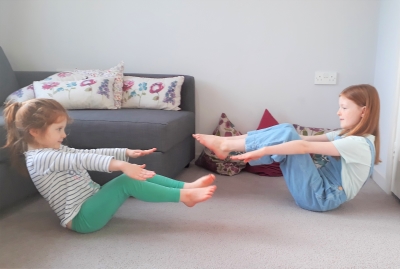What Is Yoga?
Yoga is an ancient form of exercise that focuses on strength, flexibility and breathing, to boost physical and mental well-being. The practice originated in India about 5,000 years ago and has been adapted in other countries in a variety of ways. There are many styles of yoga that combine physical postures, breathing techniques, and meditation or relaxation.
The term 'Yoga' in the Western world often refers to a modern form of hatha yoga, which emphasises the benefits of yoga as exercise and self-awareness.
This is largely true of the yoga in my lessons. Yoga in my lessons consists of postures (asanas) adapted for children, and made engaging through stories and imagination. For older children, the postures are often connected by flowing sequences (vinyasas), and accompanied by age appropriate breathing exercises. There is also a period of relaxation or meditation.

Asanas / Postures
Asanas are the physical positions in yoga. There are many theories about the benefits that they can have.

Mindfulness
Mindfulness is when we pay attention, notice, and are present in what we’re doing. When we are being actively mindful, we are noticing the world around us, as well as our thoughts, feelings, behaviors, movements, and how we affect others around us.

Meditation
There are different types of meditation. Seated, formal meditation usually begins in a quiet distraction free space, with deep breathing in a comfortable position. All awareness is brought to the breath, consciously guiding the mind towards a point of focus, such as a mantra. This could be one of the yamas or niyamas listed below. The practise can last from a minute to an hour or more and is often quiet and self-guided.
Yoga Philosophy
See below for more information about the yamas and niyamas. I do not teach these explicitly during my lessons, however many of them occur as themes and morals within children’s stories and will form part of discussions and activities.